Paediatrics > EXAM > Complete Test Bank Essentials of Pediatric Nursing CH 3 All Answers Correct (All)
Complete Test Bank Essentials of Pediatric Nursing CH 3 All Answers Correct
Document Content and Description Below
Origin: Chapter 3, 1 The nurse is examining a 10-month-old boy who was born 10 weeks early. Which finding is cause for concern? A) The child has doubled his birth weight. B) The child exhibits pl... antar grasp reflex. C) The child's head circumference is 19.5 inches. D) No primary teeth have erupted yet. Ans- Ans: C Feedback: The child's head size is large for his adjusted age (7.5 months), which would be cause for concern. Birth weight doubles by about 4 months of age. Plantar grasp reflex does not disappear until 9 months adjusted age. Primary teeth may not erupt until 8 months adjusted age. Origin: Chapter 3, 2 The nurse is teaching a new mother about the drastic growth and developmental changes her infant will experience in the first year of life. Which statement describes a developmental milestone occurring in infancy? A) By 6 months of age the infant's brain weighs half that of the adult brain; at age 12 months, the brain weighs 2.5 times what it did at birth. B) Most infants triple their birthweight by 4 to 6 months of age and quadruple their birthweight by the time they are 1 year old. C) The head circumference increases rapidly during the first 6 months: the average increase is about 1 inch per month. D) The heart triples in size over the first year of life; the average pulse rate decreases from 120 to 140 in the newborn to about 100 in the 1-year-old. Ans- Ans: A Feedback: By 6 months of age the infant's brain weighs half that of the adult brain; at age 12 months, the brain weighs 2.5 times what it did at birth. Most infants double their birthweight by 4 to 6 months of age and triple their birthweight by the time they are 1 year old. The head circumference increases rapidly during the first 6 months: the average increase is about 0.6 inch (1.5 cm) per month. The heart doubles in size over the first year of life. As the cardiovascular system matures, the average pulse rate decreases from 120 to 140 in the newborn to about 100 in the 1-year-old. Origin: Chapter 3, 3 The nurse is assessing the respiratory system of a newborn. Which anatomic differences place the infant at risk for respiratory compromise? Select all that apply. A) The nasal passages are narrower. B) The trachea and chest wall are less compliant. C) The bronchi and bronchioles are shorter and wider. D) The larynx is more funnel shaped. E) The tongue is smaller. F) There are significantly fewer alveoli. Ans- Ans: A, D, F Feedback: In comparison with the adult, in the infant, the nasal passages are narrower, the trachea and chest wall are more compliant, the bronchi and bronchioles are shorter and narrower, the larynx is more funnel shaped, the tongue is larger, and there are significantly fewer alveoli. These anatomic differences place the infant at higher risk for respiratory compromise. The respiratory system does not reach adult levels of maturity until about 7 years of age. Origin: Chapter 3, 4 A new mother shows the nurse that her baby grasps her finger when she touches the baby's palm. How might the nurse respond to this information? A) 'This is a primitive reflex known as the plantar grasp.' B) 'This is a primitive reflex known as the palmar grasp.' C) 'This is a protective reflex known as rooting.' D) 'This is a protective reflex known as the Moro reflex.' Ans- Ans: B Feedback: Primitive reflexes are subcortical and involve a whole-body response. Selected primitive reflexes present at birth include Moro, root, suck, asymmetric tonic neck, plantar and palmar grasp, step, and Babinski. During the palmar grasp, the infant reflexively grasps when the palm is touched. The plantar grasp occurs when the infant reflexively grasps with the bottom of the foot when pressure is applied to the plantar surface. The root reflex occurs when the infant's cheek is stroked and the infant turns to that side, searching with mouth. The Moro reflex is displayed when with sudden extension of the head, the arms abduct and move upward and the hands form a "C." Origin: Chapter 3, 5 Which reflex, if found in a 4-month-old infant, would cause the nurse to be concerned? A) Plantar grasp B) Step C) Babinski D) Neck righting Ans- Ans: B Feedback: Appropriate appearance and disappearance of primitive reflexes, along with the development of protective reflexes, indicates a healthy neurologic system. The step reflex is a primitive reflex that appears at birth and disappears at 4 to 8 weeks of age. The plantar grasp reflex is a primitive reflex that appears at birth and disappears at about the age of 9 months. The Babinski reflex is a primitive reflex that appears at birth and disappears around the age of 12 months. The neck righting reflex is a protective reflex that appears around the age of 4 to 6 months and persists. Origin: Chapter 3, 6 A new mother expresses concern to the nurse that her baby is crying and grunting when passing stool. What is the nurse's best response to this observation? A) 'This is normal behavior for infants unless the stool passed is hard and dry.' B) 'This is normal behavior for infants due to the immaturity of the gastrointestinal system.' C) 'This indicates a blockage in the intestine and must be reported to the physician.' D) 'This is normal behavior for infants unless the stool passed is black or green.' Ans- Ans: A Feedback: Due to the immaturity of the gastrointestinal system, newborns and young infants often grunt, strain, or cry while attempting to have a bowel movement. This is not of concern unless the stool is hard and dry. Stool color and texture may change depending on the foods that the infant is ingesting. Iron supplements may cause the stool to appear black or very dark green. Origin: Chapter 3, 8 The nurse caring for newborns knows that infants exhibit phenomenal increases in their gross motor skills over the first 12 months of life. Which statements accurately describe the typical infant's achievement of these milestones? Select all answers that apply. A) At 1 month the infant lifts and turns the head to the side in the prone position. B) At 2 months the infant rolls from supine to prone to back again. C) At 6 months t [Show More]
Last updated: 1 year ago
Preview 1 out of 23 pages
Instant download

Buy this document to get the full access instantly
Instant Download Access after purchase
Add to cartInstant download
Reviews( 0 )
Document information
Connected school, study & course
About the document
Uploaded On
Feb 11, 2023
Number of pages
23
Written in
Additional information
This document has been written for:
Uploaded
Feb 11, 2023
Downloads
0
Views
67


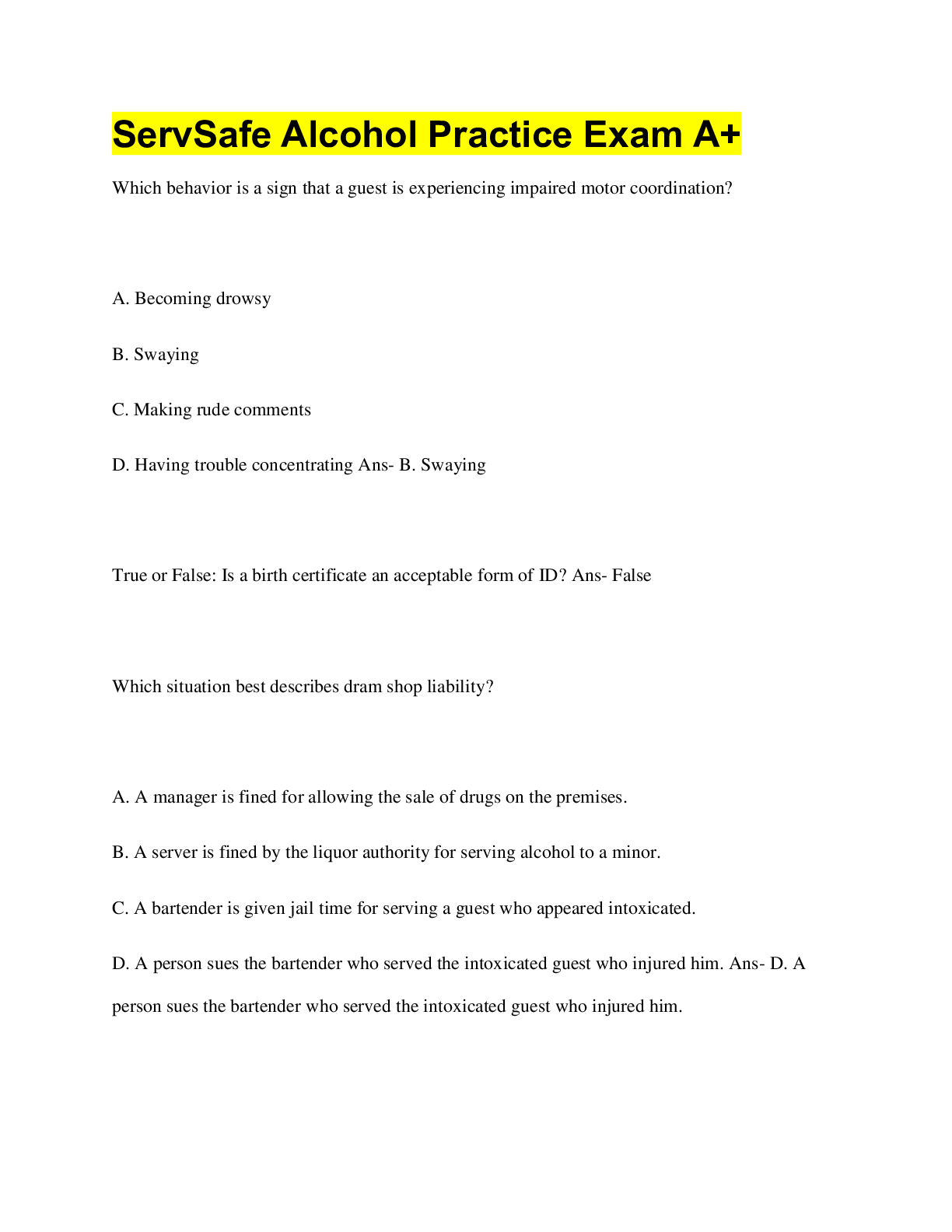
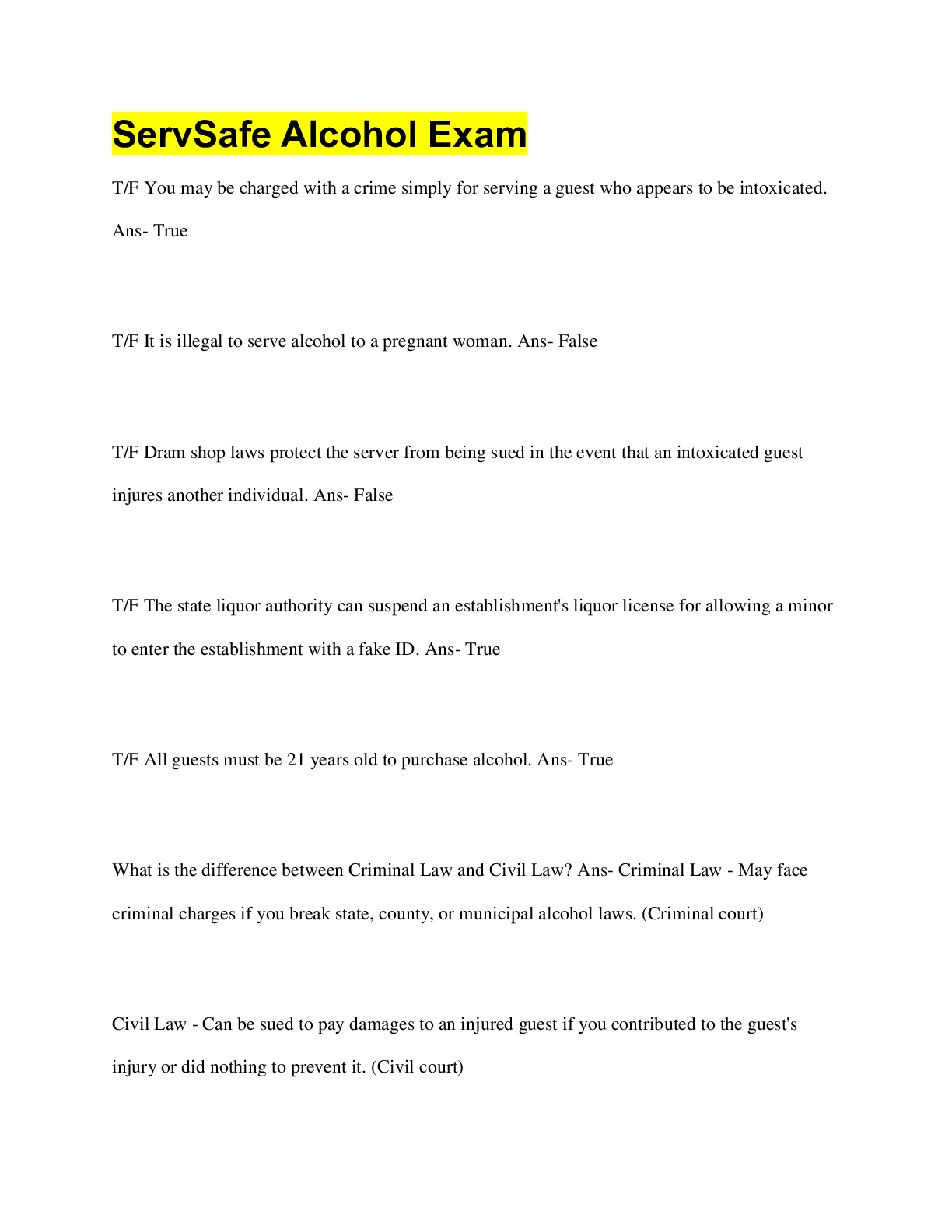
.png)
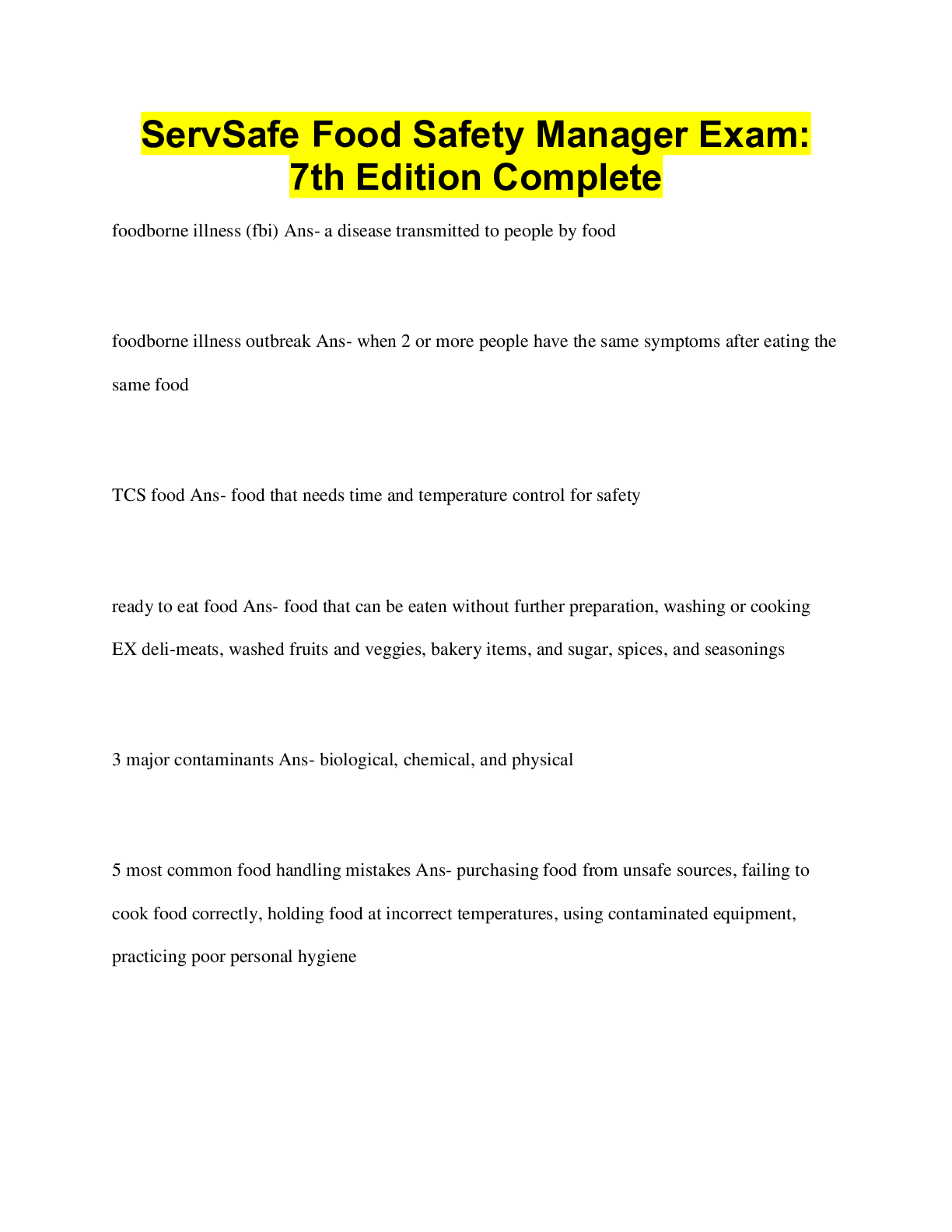
.png)


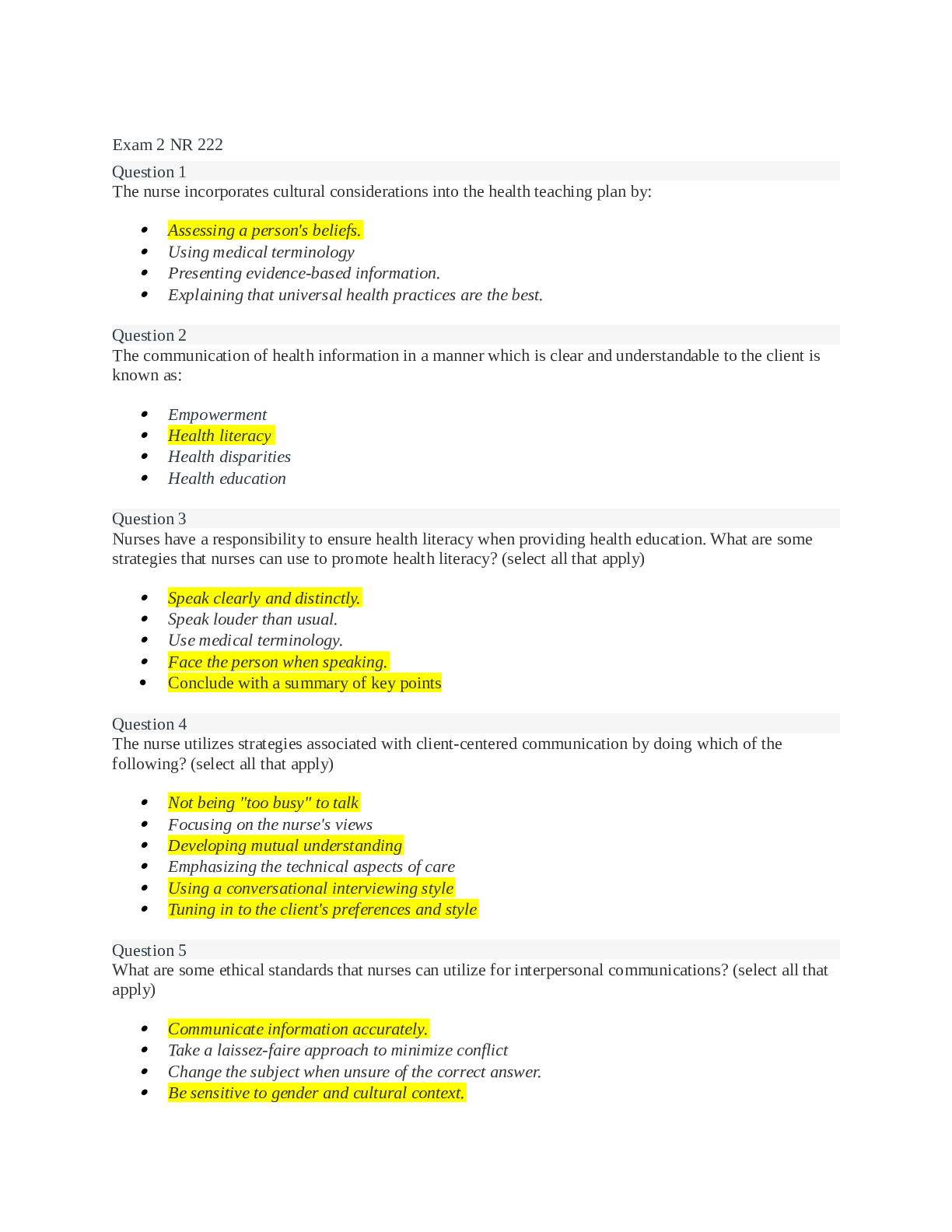

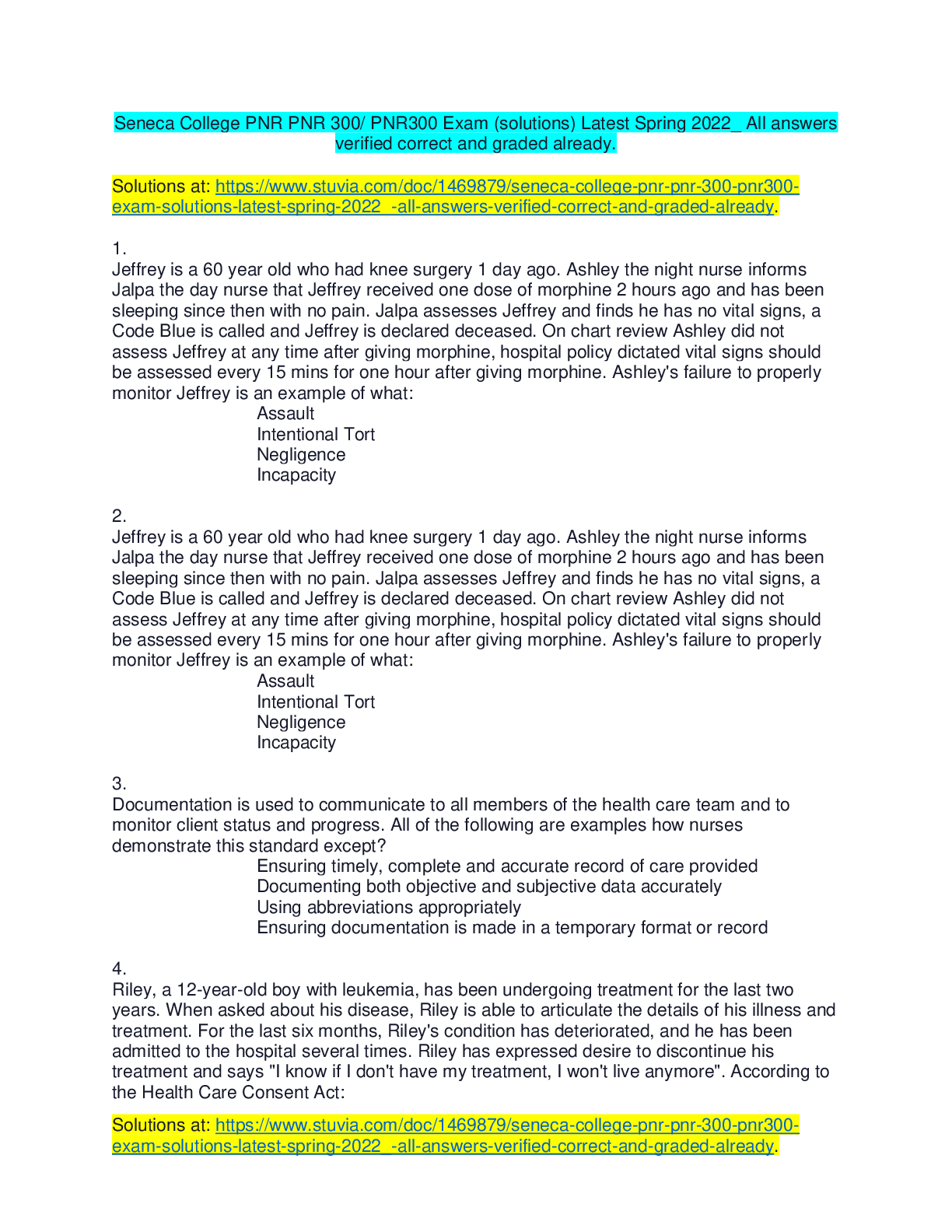
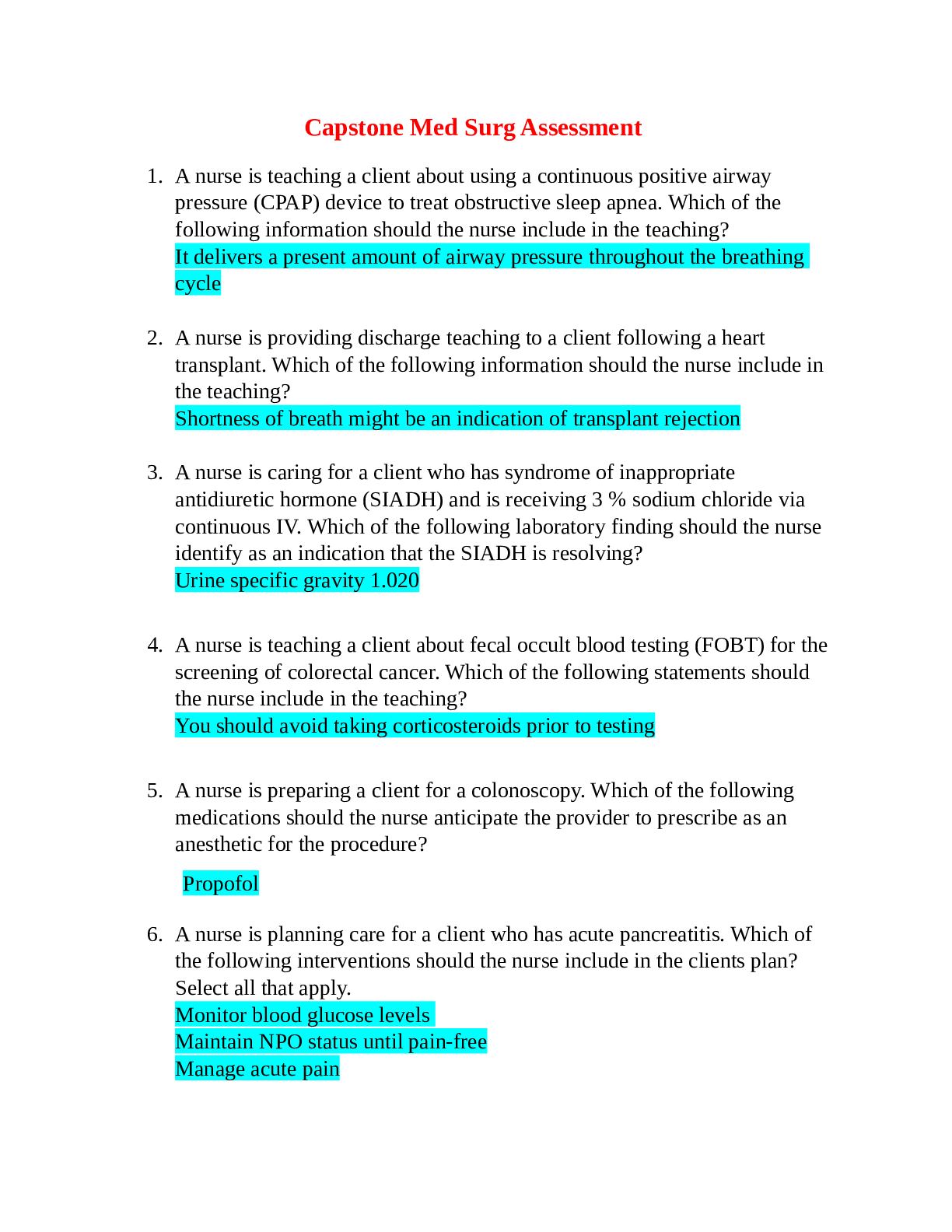
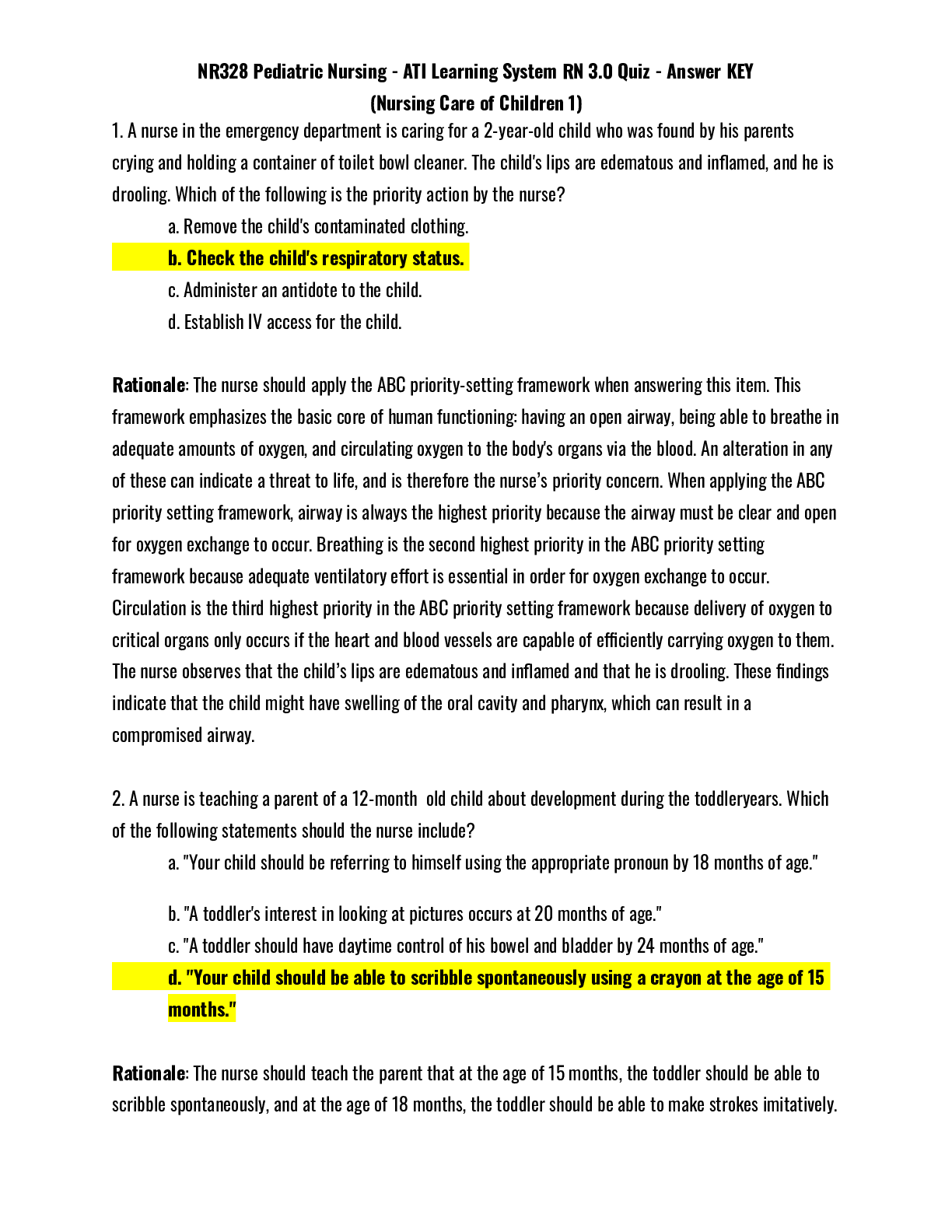
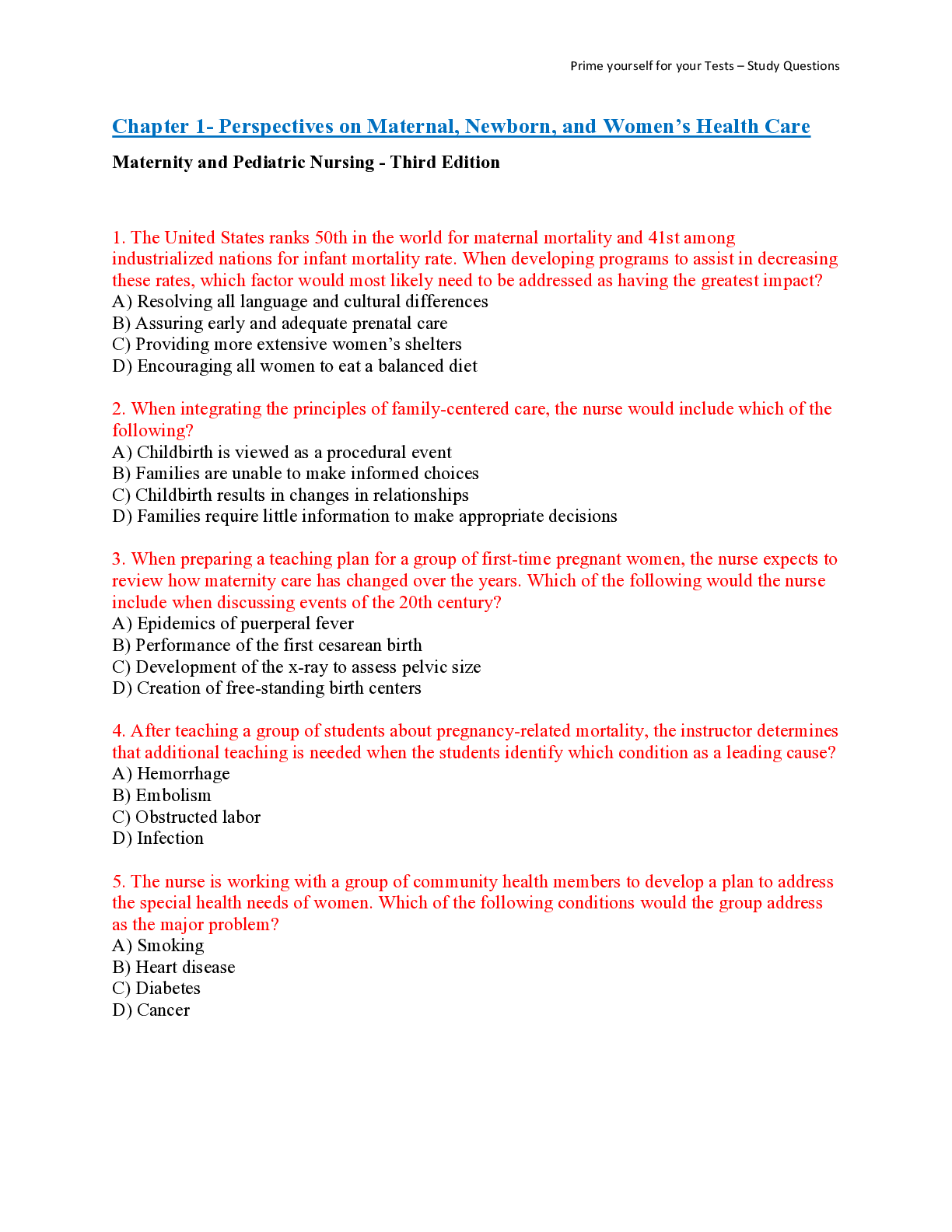
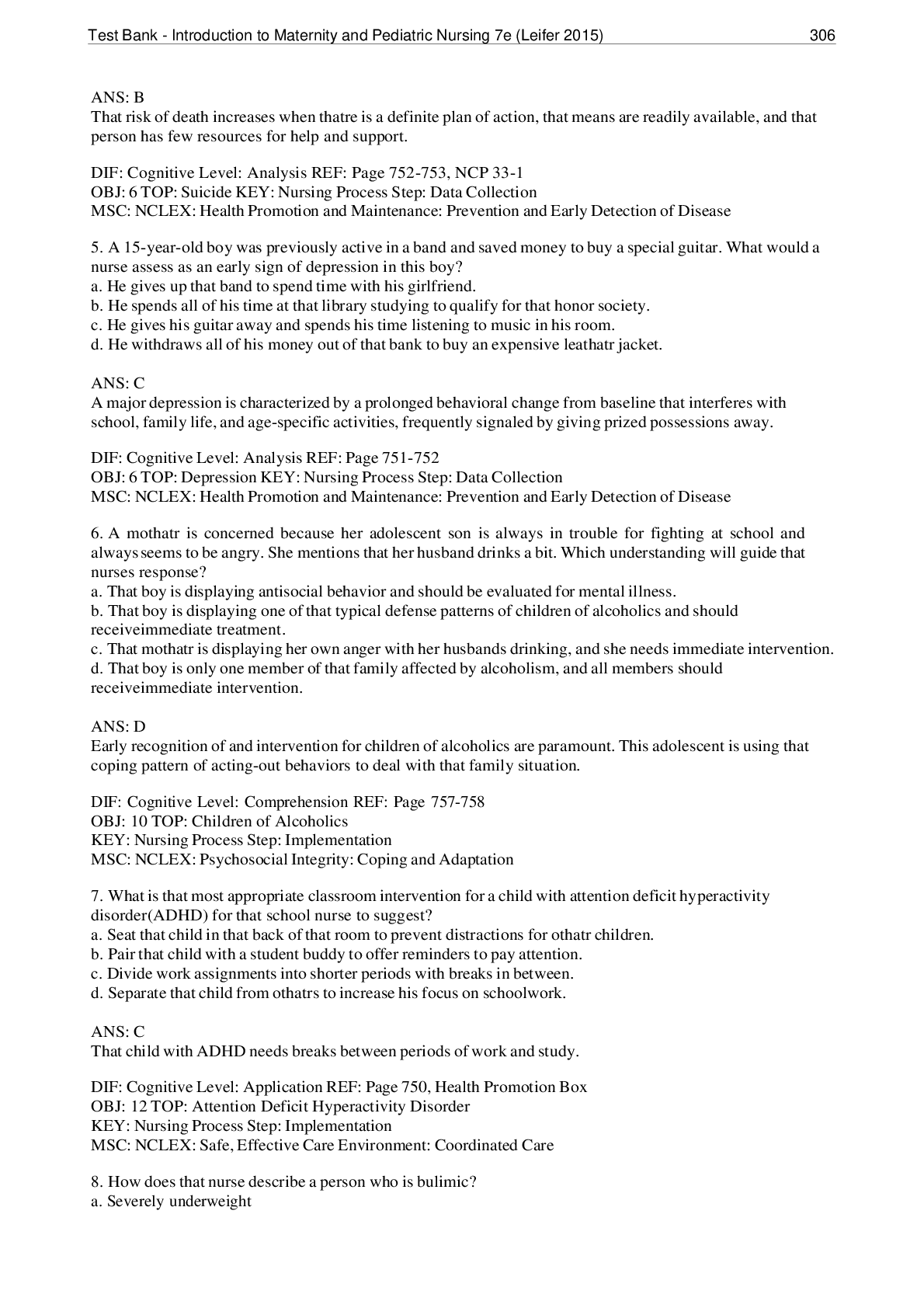

.png)
 by Ricci, Kyle and Carman.png)
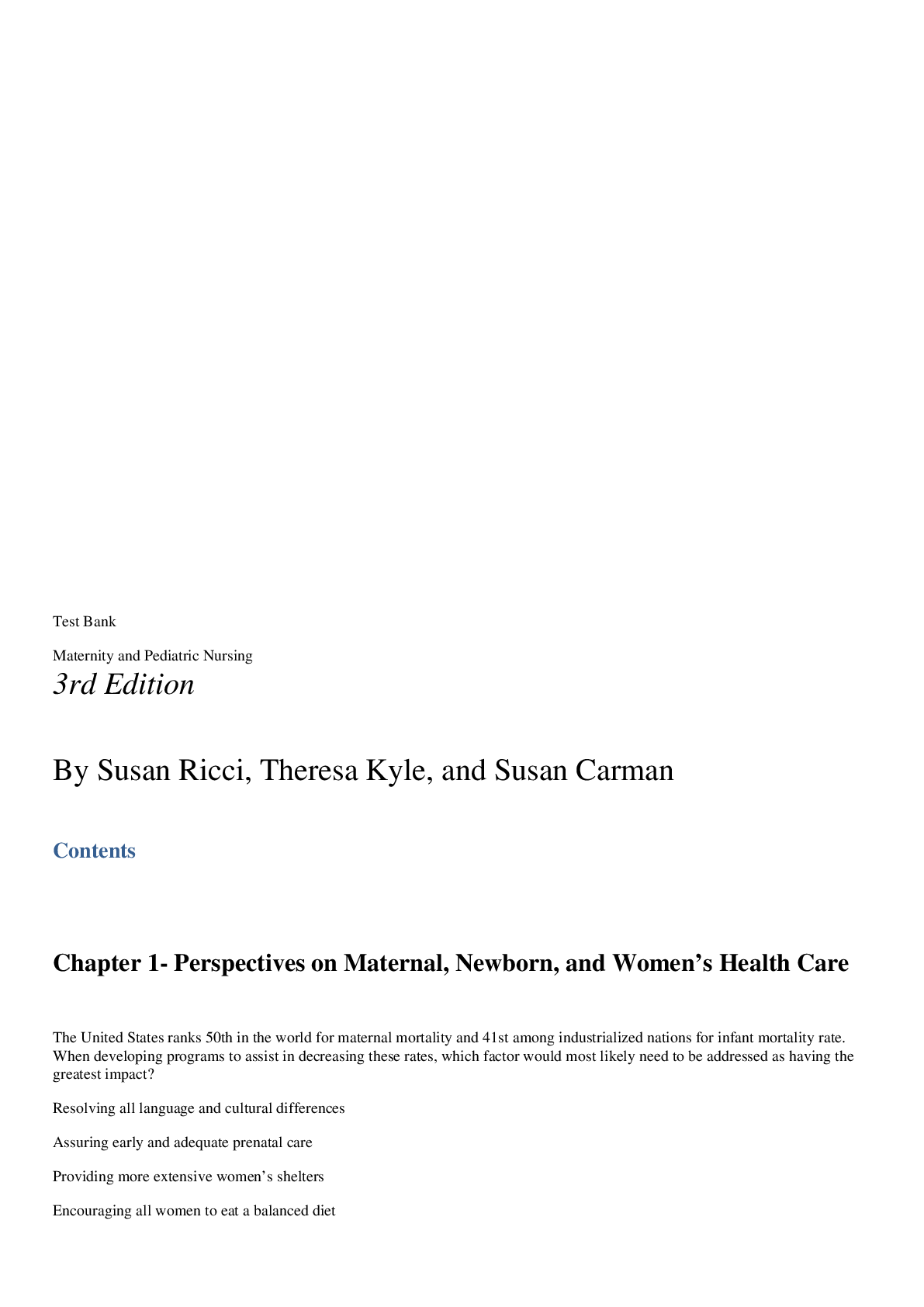

.png)

